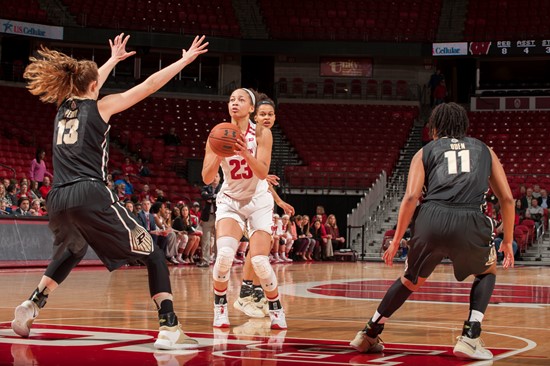Home »
Misc »
How to get better at catching a basketball
How to get better at catching a basketball
8 quick drills to build your passers, catchers
Passing and catching is becoming a lost skill in today’s game. Many players are spending more time dunking, trying to dunk or attempting 3-point shots.
Photo: Thomas Sorenes
Passing and catching is really one action and should be treated as such. Much of a team’s success in running a motion offense, or a set play, is contingent on the fact that the ball will be passed and caught properly.
Coaches tend to place a great deal of importance on their team’s offensive turnovers. They feel they must average less than 12 turnovers a game to be successful. By being able to simply pass and catch the basketball, you can save two to five turnovers a game. These eight drills will help your players handle the ball better.
1. No Walk Drill (5 minutes)This drill consists of two players and one ball. The players are 10 to 12 feet across from each other. The player with the ball will pass to his or her partner the partner will catch the ball with both feet in the air.![]() This continues until you stop the drill. Utilize the chest bounce, overhead and skip pass in this drill.
This continues until you stop the drill. Utilize the chest bounce, overhead and skip pass in this drill.
2. Two-Ball Passing (2 minutes)This drill consists of two players and two balls. The players are again 10 to 12 feet across from each other. The players will make right-handed and left-handed chest passes, and right-handed and left-handed bounce passes simultaneously. The purpose of the drill is getting them to pass as quickly as possible without making a turnover.
3. Bad Pass (2 minutes)This drill consists of two players and one ball. The bad-pass drill is where the players throw bad passes to each other. The receiver must move both feet to the ball to get into position to catch it with two hands. This drill is especially good for working on short hops, bad bounces and odd-spinning passes.
4. Back To Passer (2 minutes)The back-to-the-passer drill is where one player has his or her back turned to the other one. The player with the ball will call out the player’s name and makes a chest pass to the receiver. Upon hearing their name called, the receiver will turn completely to the ball with both hands, ready to catch the pass already on its way.
The player with the ball will call out the player’s name and makes a chest pass to the receiver. Upon hearing their name called, the receiver will turn completely to the ball with both hands, ready to catch the pass already on its way.
5. Keep Away (1 minute)This drill consist of three players and one ball. The defender will be within the jump circle or the free-throw circle on the court, and the two passers will be standing on the circle. The passer’s job is to complete the pass without allowing the defender to touch it. If it is touched, the defender replaces the passer.
6. Three-Player Weave (5 minutes)In this drill, have five groups of three and each group has a ball. The passer will pass to the teammate next to him or her and follow the pass, going behind the teammate. This is continued up the court until a layup is shot. The group will then come back down the floor the same way.
7. Machine Gun Passing (5 minutes)This drill consists of seven players and two balls.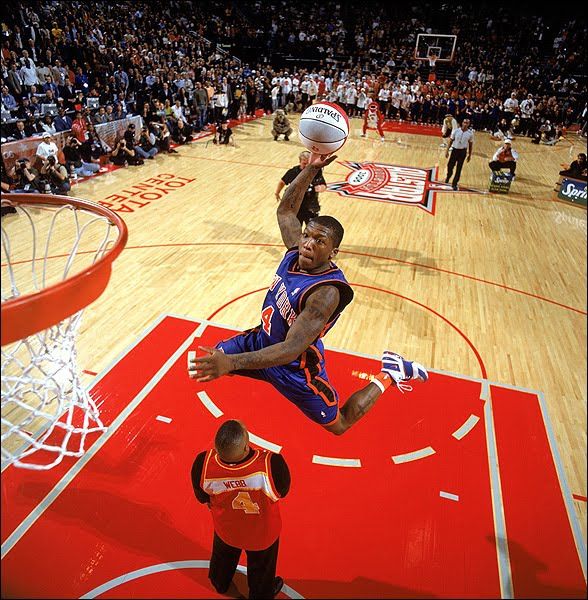 One player in the middle must continuously make completed passes to the remaining players scattered along the 3-point line for 30 seconds. The players on the 3-point line must have his or her knees bent and hands ready. As soon as a ball is caught, it is passed back to the middle player. The middle player must pass the ball out immediately, but they cannot pass it to the same player that threw it to them. If a ball gets free on the perimeter, it equals 10 push-ups done at the end of the drill.
One player in the middle must continuously make completed passes to the remaining players scattered along the 3-point line for 30 seconds. The players on the 3-point line must have his or her knees bent and hands ready. As soon as a ball is caught, it is passed back to the middle player. The middle player must pass the ball out immediately, but they cannot pass it to the same player that threw it to them. If a ball gets free on the perimeter, it equals 10 push-ups done at the end of the drill.
8. Four-Corner Passing (1 to 3 minutes)This drill consists of 12 to 16 players and four balls. The players get in lines at the two blocks and the two elbows of the lane. Each line will have a ball. On the whistle, the players will pass to the right, follow their pass for a hand-off, return the hand-off, and rotate to the back of the line.
This is a continuous drill with all four balls moving at the same time. Have your players call out the player’s name they are passing to. On a second whistle, the players will switch the direction of the passes.
On a second whistle, the players will switch the direction of the passes.
These are eight quick fundamental drills on passing and catching to make your players better passers and catchers. Practice at least two of these drills daily, spending at least 5 minutes — but usually 10 minutes — somewhere in practice on these drills. These drills, as well as the emphasis on passing and catching in scrimmage situations, will make your team much better ball handlers.
Beginner Drill To Improve Passing Technique and Catching
Home > Coaching > Drills > Passing > Beginner Drill To Improve Passing Technique and Catching
The following Free-Throw Lane 4 Corner Passing Drill is effective because it not only develops fundamental passing ability, but it also adds multiple different movements and forces your players to focus on the many actions going on around them.
When teaching players a new passing drill, coaches typically use exercises that center only on form and crisp passing fundamentals. While this is very important to developing passing skills, one important aspect can be forgotten. In a real game situation, there are many variables that contribute to successful passing. These variables consist of teammates who are constantly in motion, the defense floating in and out of passing lanes and many other aspects your passers have to be aware of.
While this is very important to developing passing skills, one important aspect can be forgotten. In a real game situation, there are many variables that contribute to successful passing. These variables consist of teammates who are constantly in motion, the defense floating in and out of passing lanes and many other aspects your passers have to be aware of.
Step 1:
The drill begins with your team breaking up into four
lines, one at each of the four corners of the free-throw
lane. To become familiar with the pattern, your team
should start with just one ball. As shown on the right,
player 1 will begin with the ball. #1 will pass up the
lane to #2 and will follow the pass and run toward #2.
Step 2:
Player #2 will catch the pass from #1 and immediately
pass the ball back to player #1.
Step 3:
Player #1 will catch the return pass from #2.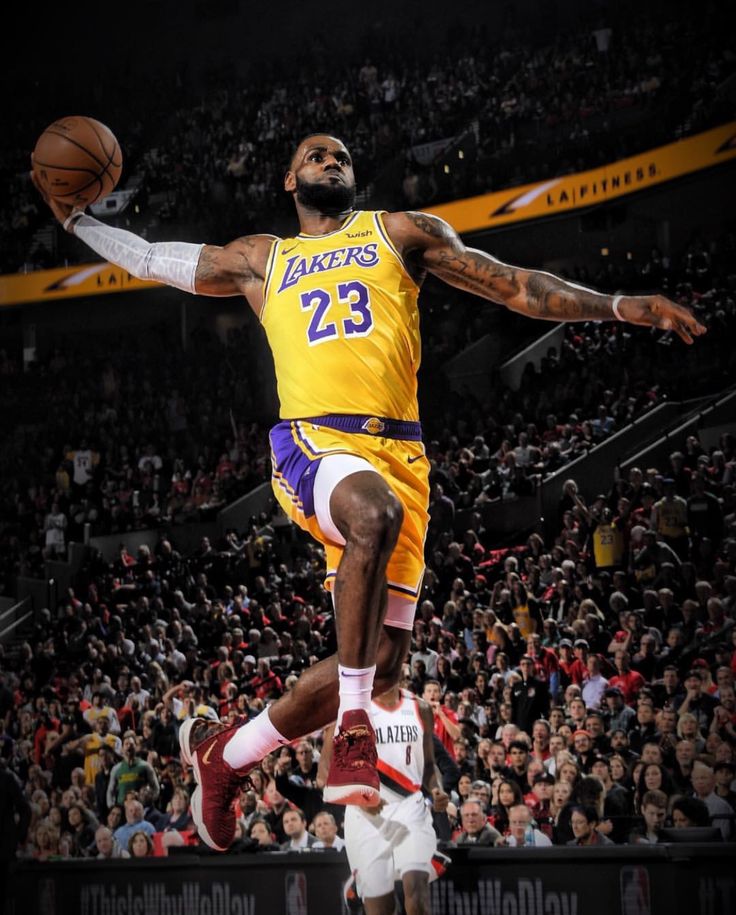 At this
point, player #1 should now be within arm's length from
#2. #1 will then hand off the ball to #2 and move to the
back of the line behind #6.
At this
point, player #1 should now be within arm's length from
#2. #1 will then hand off the ball to #2 and move to the
back of the line behind #6.
Step 4:
Player #2 receives the handoff from #1 and then passes
the ball across the lane to player #3. As soon as 2 passes
to #3, player #2 will follow the pass and run to where 3 is
on the right elbow. Just as in step 2 above, player #3 will
catch the pass from #2 and immediately pass the ball
back to player #2. Following step 3 above, player #2 will
catch the return pass from #3 and then hand off the ball
to #3 and move to the back of the line behind #7.
This drill continues by moving in a counter clockwise
motion as shown in the three diagrams on the right. The
drill keeps the same pattern the entire time – pass, pass
back and handoff.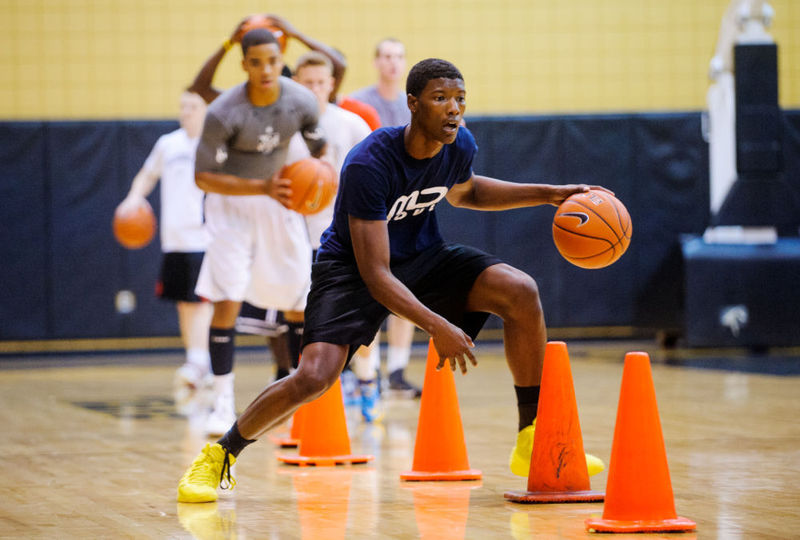 #3 will use this pattern with #4. Then
#4 will do the same with #5 and so on.
#3 will use this pattern with #4. Then
#4 will do the same with #5 and so on.
Step 5 (Add Another Ball):
Once your players feel comfortable with the drill using
one ball, you can increase the tempo by adding a
second ball. To begin with this increased difficulty,
start with the basketballs in diagonal corners. As shown
in the diagram to the right, you can start with players #1
and #3 as your first passers.
Just like with one basketball, your players will use the
same pattern of pass, pass back and handoff, following
in a counter clockwise motion.
Step 6 (Add Third Ball):
To make things even more difficult, you can add a third
basketball. In this case, players #1, #2 and #3 will begin
as passers. Instead of #1 passing to #2, player #1 will
now pass to player #6.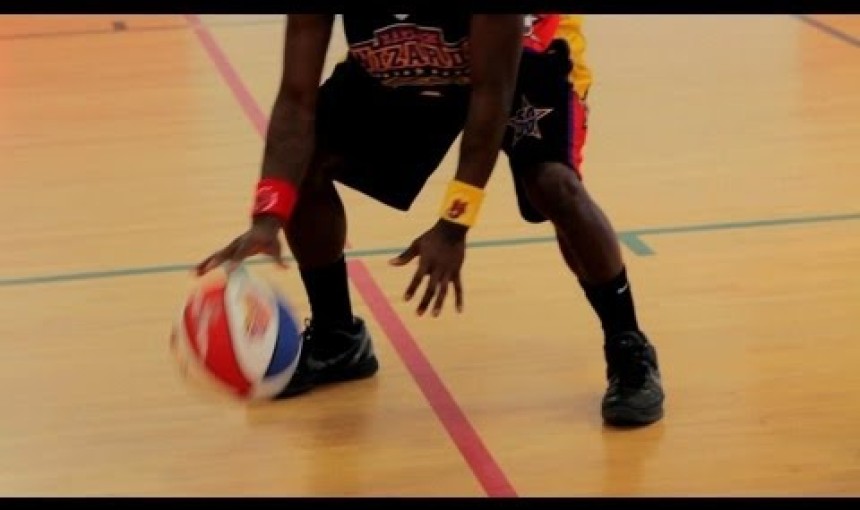 At the same time, player #2 will
pass to player #7 and player #3 will pass to player #4.
At the same time, player #2 will
pass to player #7 and player #3 will pass to player #4.
Adding a third basketball will likely create confusion
for your players. This will simulate game situations
where there are multiple variables going on at one time.
Encourage your team to focus on the same pattern
as above. Just like with one or two basketballs, your
players will follow the same pattern of pass, pass back and handoff, repeating in a counter clockwise motion.
This drill works your players’ minds, passing ability and conditioning.
You can see the drill in action by watching this video that I found on youtube:
Here are more great games and basketball drills.
What do you think? Let us know by leaving your comments, suggestions, and questions. ..
..
How to catch the ball safely and correctly: tips from basketball players
Catching is one of the four ball handling techniques in basketball. Its correct execution allows the player not only to take possession of the ball, but also to immediately take any further attacking actions. Thus, catching the ball is the starting position for a number of other offensive techniques (passing, dribbling, throwing into the basket).
During the game, a basketball player must not passively wait for the ball. His task is to move around the site and move towards a possible pass. The player's gaze should be directed at the ball, but at the same time, with peripheral vision, he should see the position of partners and opponents on the court in order to quickly assess the situation and determine their further actions.
Get new forecasts: Vkontakte and Telegram .
The choice of how to perform a technique depends on how fast and at what height the sports equipment flies, as well as on one's own position in relation to it.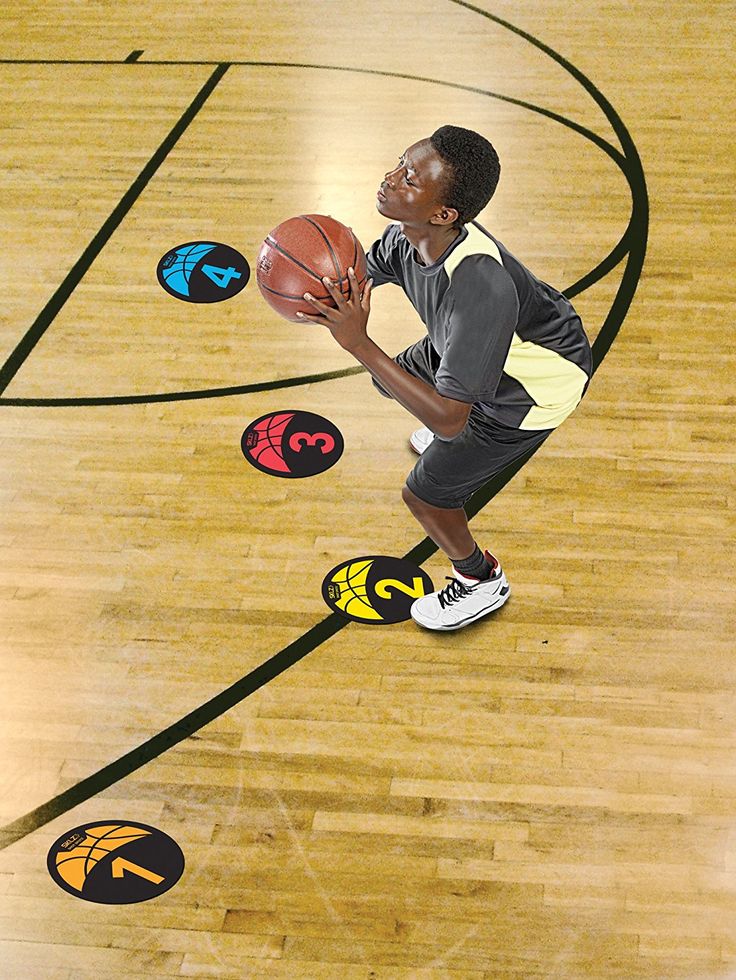
The easiest and most reliable way to master the ball is to catch the ball with both hands. In this case, the player stretches his arms with tense hands towards the approaching projectile. At the moment of contact, the ball is wrapped around the fingers. At the same time, the arms should bend slightly, extinguishing the speed of the sports equipment. Having fixed the ball, the player immediately takes the position necessary to perform the next technique. A high-flying ball is caught in the same way, only in addition the player must make a jump. To pick up a ball that has bounced off the court, an oblique movement is made. In this case, the ball is wrapped around with brushes from the outside and pulled up by the hands to the body.
Basketball players have to catch the ball with only one hand when the game situation does not allow them to reach it with both hands. The technique for performing this technique is somewhat different from the previous one. In this case, the player must extend his arm with a relaxed hand towards the ball. As soon as the ball touches the fingers, it is necessary to take the hand back a little, accompanying and at the same time slowing down the projectile. A slight turn of the body towards the working hand facilitates the process of stopping the ball and fixing it. After that, the ball is clasped with two hands. If the projectile flies high, then the player, performing a catch with one hand in a jump, slightly bends the body, quickly lowers it and, holding it with the other hand, pulls it up to the body. As soon as the ball is caught, the basketball player must take a stance to perform the next game move.
As soon as the ball touches the fingers, it is necessary to take the hand back a little, accompanying and at the same time slowing down the projectile. A slight turn of the body towards the working hand facilitates the process of stopping the ball and fixing it. After that, the ball is clasped with two hands. If the projectile flies high, then the player, performing a catch with one hand in a jump, slightly bends the body, quickly lowers it and, holding it with the other hand, pulls it up to the body. As soon as the ball is caught, the basketball player must take a stance to perform the next game move.
Everything about basketball
Interference with hitting and interfering with the ball in basketball: stages of throwing, types of interference, punishment for a wrong throw It is necessary to perform correctly ...
Playing basketball: goals, management, who is considered the winner? Basketball is a game for 2 teams with 5 players each.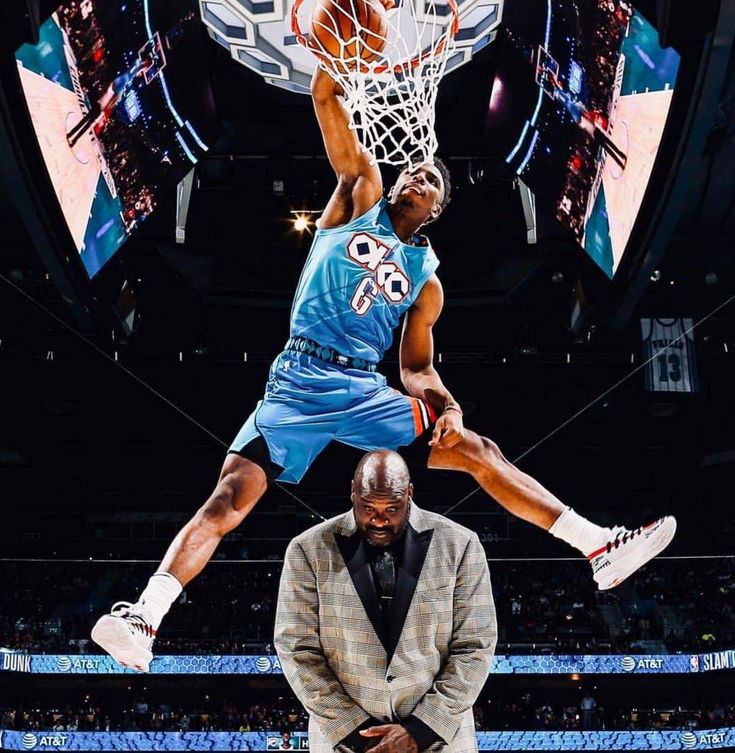 Teams are assigned...
Teams are assigned...
VTB United League: what kind of tournament is this? In the post-Soviet states, the situation with basketball at the beginning of the 2000s was almost...
Korfball is another form of basketball The only sport game recognized by the International Olympic Committee, which consists of teams...
Basketball vocabulary
Dead ball What is "dead ball" in basketball? When is the ball considered dead? A dead ball is a ball that has come out of...
Siren shot What is a "siren shot" in basketball? How often do siren shots happen in basketball? Throw with a siren is...
What is Sergey Belov's phone number? Sergei Belov - a famous Soviet basketball player, was born in 1944 in a native Leningrad family,...
Free throw What is a "free throw" in basketball? When is a free throw awarded? A free throw is.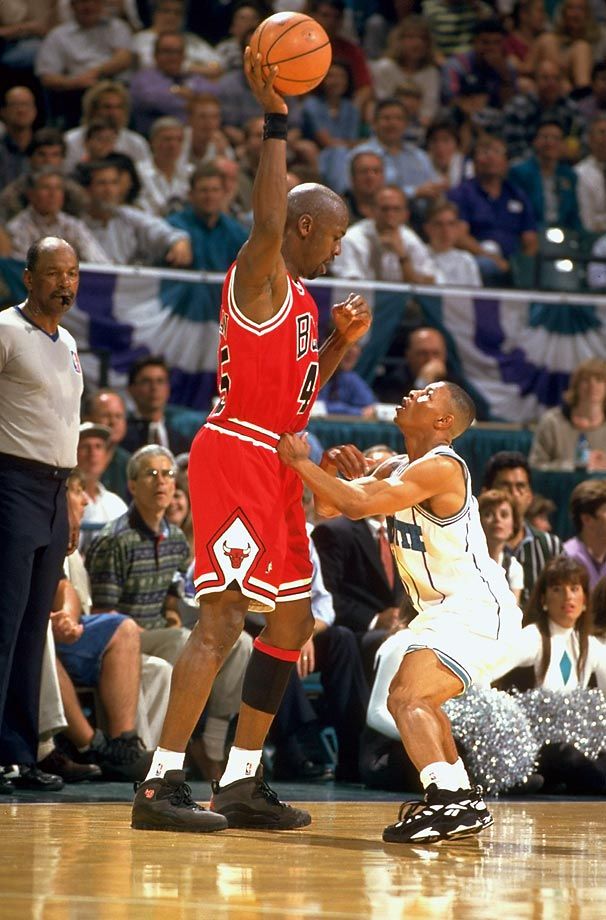 ..
..
All about sports
Famous fans of FC Dynamo Kyiv Dynamo Kyiv Valeriy Lobanovsky is hardly remembered by many fans from the countries of the former Soviet Union...
Setters in volleyball: everything you need to know about them It may seem to some that the main tone of the game in volleyball is set by the forwards. They must...
Stadium 974 / Ras Abu Aboud (Doha) A unique stadium made of shipping containers was built in Doha specifically for the FIFA World Cup Qatar 2022....
Team A and B: what are the national teams of countries ? Biathlon is especially well developed in some countries. Number of young and promising...
types, passing technique, how to catch the ball
Home / All sports / Passing the ball in basketball: types, passing technique, how to catch the ball
04/03/2020 All sports Leave a comment 59,963 Views
Share with friends
Basketball is a team sport. It follows from this that all team members must be involved in the game process and work as one single mechanism. One of the main skills in basketball is passing, which, by the way, many underestimate and spend little time in training on improving it.
It follows from this that all team members must be involved in the game process and work as one single mechanism. One of the main skills in basketball is passing, which, by the way, many underestimate and spend little time in training on improving it.
When teaching catching and passing the ball in basketball, it is important that the coach/teacher focuses not only on the technique of performing the skill, but also on the mentality. It's just that some novice players believe that the pass should be done when they do not have the opportunity to throw into the ring, although this opinion is erroneous, because the transfer, especially done wisely, brings the team much closer to success.
When teaching the passing of players of the younger group, it is worth considering their physical and mental characteristics. Small basketball players usually do not have enough strength to perform an accurate technically correct pass. In addition, do not forget that the skill of a good pass is developed with experience, and at the initial stage they simply do not have it.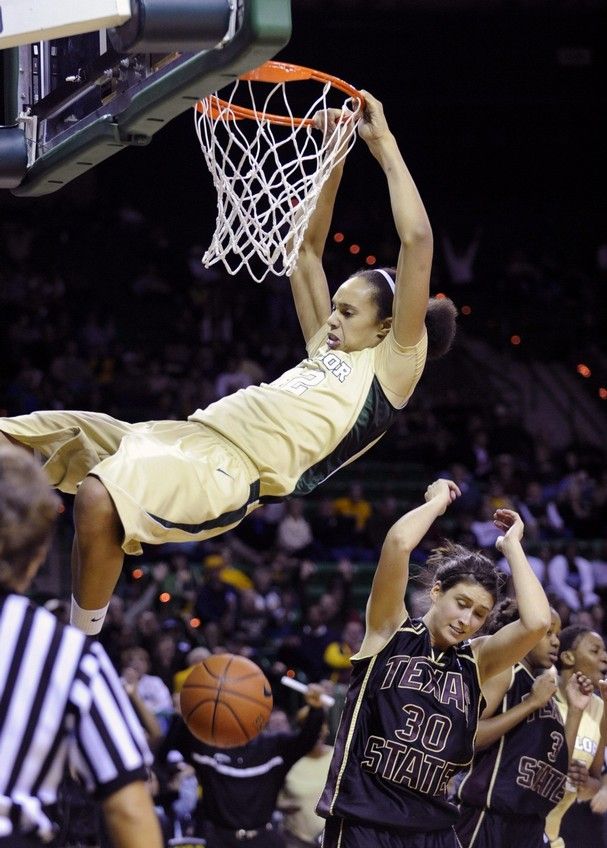 Beginners will naturally have many mistakes when passing, especially when passing the ball with one hand, with a bounce, as well as passing in motion. But through trial and error, this technical skill can be gradually improved. A coach or physical education teacher should tell his students about this so that they do not get upset when nothing works out.
Beginners will naturally have many mistakes when passing, especially when passing the ball with one hand, with a bounce, as well as passing in motion. But through trial and error, this technical skill can be gradually improved. A coach or physical education teacher should tell his students about this so that they do not get upset when nothing works out.
How many players are there in basketball? Positions of players and their meanings
What are the types of passes in basketball?
Basketball passing is a fundamental skill that players need to practice regularly. Teams that rely on the skill of individual team members will find it difficult to score high against a well defending opponent. In basketball, passes can be classified into:
Also share gears:
But the main classification into species is the following type:
- Transmission from chest with two hands
- Bounce pass
- From behind the head
- Other types: side, bottom, hand to hand, shoulder pass, baseball pass, behind the back, concealed, in motion.

Below is a summary of each major type of pass, detailing how and when a particular pass is made. It’s worth clarifying right away that two hands are used to pass from the chest and from behind the head, so it’s best to start teaching beginner players from them.
Chest pass
This is the most common and most effective pass in basketball. It can be used in most different situations and places in the playground. To perform a chest pass, place your hands evenly on both sides of the ball and spread your fingers (thumbs pointing towards the chest). We hold the ball near the chest and in order to pass to the partner, fully extend the arms forward, thus pushing the playing projectile towards the partner. In this case, the palms of the hands turn around and look at each other with the outside, and the thumbs are pointing down (see the picture).
If the situation allows, try stepping one foot forward towards the partner you are about to pass to.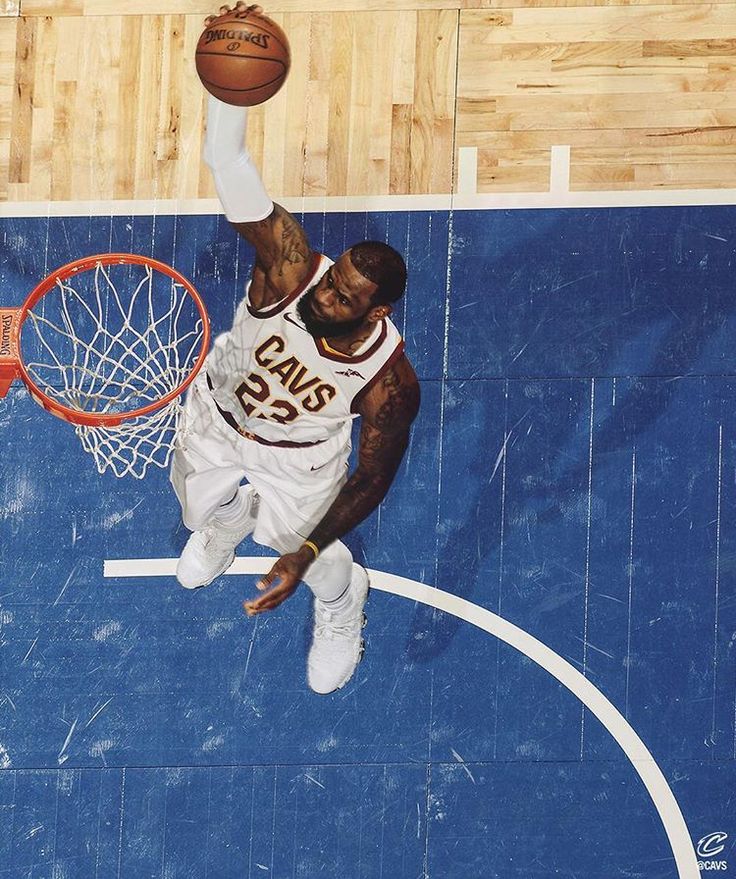 Ideally, you need to throw the ball to your partner so that it hits just below the chest - in this case, it will be very convenient for the player to receive it.
Ideally, you need to throw the ball to your partner so that it hits just below the chest - in this case, it will be very convenient for the player to receive it.
Bouncing pass
To perform such a pass, you must do all the same actions as when passing from the chest, only you need to direct the ball to a partner with a hit on the floor. Also, if there is time, take a step forward and throw the ball at a distance of about 2/3 from the partner so that it flies above the knees to the waist area. Passing accuracy requires practice, as beginners often hit the ball in the wrong place and it does not fly accurately.
Do not forget that the transfer of the ball with a rebound is slower than from the chest through the air, which makes it possible for other basketball players to intercept. Therefore, such a delivery of the ball must be carried out with caution, calculating the time and place of the ball's flight.
Overhead pass
This type of pass is used in situations where a player is driven into a difficult position and there is nothing left to do but to pass the ball to a teammate in this way.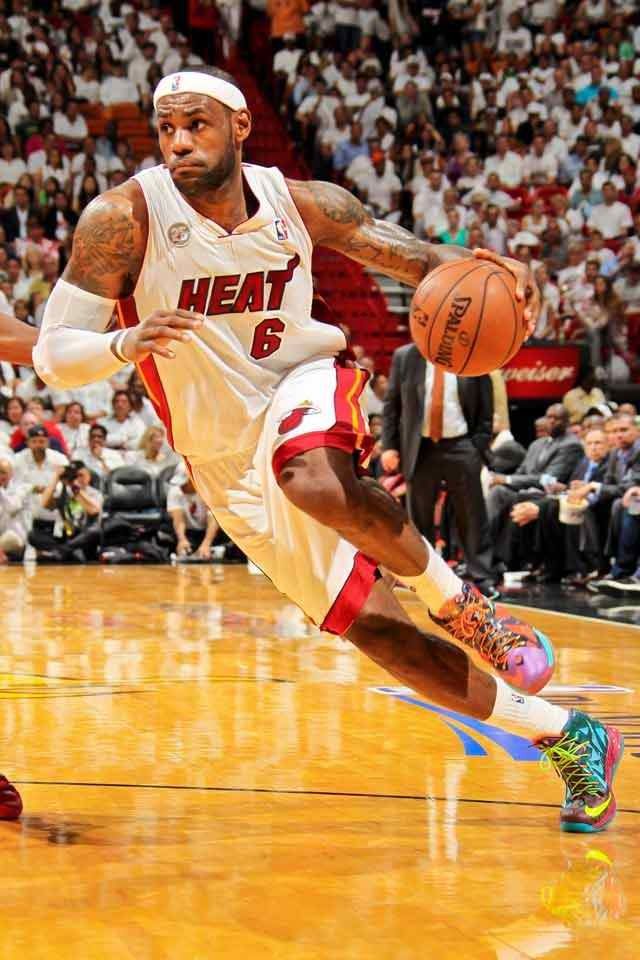 To perform, you need to put your hands on the sides of the ball, spreading your fingers, then raise the ball behind your head and straighten your arms and take a step forward to the intended place of the transfer to release the game projectile from your hands (if the situation does not allow you to put your foot forward, we pass without this action).
To perform, you need to put your hands on the sides of the ball, spreading your fingers, then raise the ball behind your head and straighten your arms and take a step forward to the intended place of the transfer to release the game projectile from your hands (if the situation does not allow you to put your foot forward, we pass without this action).
Other interesting passes
Baseball pass. This option is used in rare cases when it is necessary to quickly make a long pass, for example, from your own half of the court to someone else's. Passing is like throwing a baseball player on a shot. To make such a pass, you must first take the ball with both hands and place it near the shoulder near the ear. The body of the body is half deployed. Then, with one hand, make a pushing motion: the hand should follow the ball, stretching to its full length, and the last touch is made with the fingertips.
Hidden transmission. It can be used to confuse the opponent's defense and is especially effective when the pass is on the move while dribbling.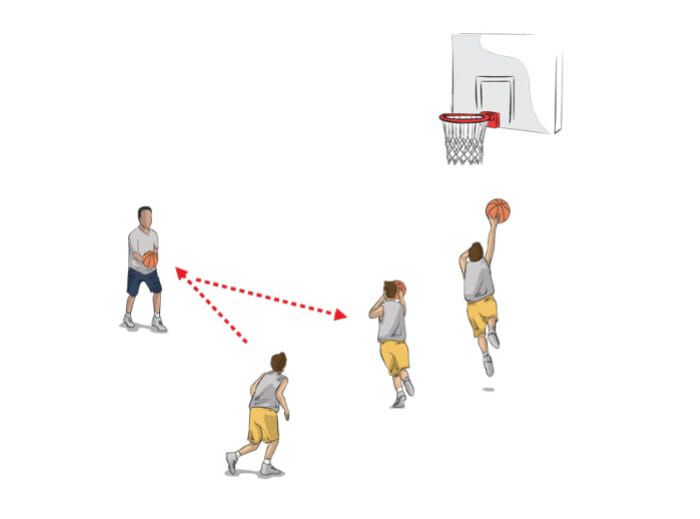 Often such a pass is used by the point guard. It is extremely difficult and in most cases performed by professional basketball players. The pass is difficult to execute because the player needs to look in one direction while throwing the ball in another direction. The situation is complicated by the speed of the player's movement and the number of opponents nearby. You need to give such a pass according to the situation: with one hand, two, with a rebound or in another way.
Often such a pass is used by the point guard. It is extremely difficult and in most cases performed by professional basketball players. The pass is difficult to execute because the player needs to look in one direction while throwing the ball in another direction. The situation is complicated by the speed of the player's movement and the number of opponents nearby. You need to give such a pass according to the situation: with one hand, two, with a rebound or in another way.
Back pass. Such a ball pass in a basketball game will make the audience rise from their seats and thank its author with loud applause. There is a problem with this type of pass and not every player will be able to perform it qualitatively, especially it is not recommended to make such a pass for beginners. Often, a pass behind the back is performed at high speed, when two attackers go to one defender, and when the opponent goes to attack the one with the ball, he gives the game projectile to his partner. The picture below clearly shows how this ball pass is performed.
The picture below clearly shows how this ball pass is performed.
Free throw training
10 Basketball pass tips
Successful teams work hard on the court, using every player on the field to reach their goal. There are 5 people in a basketball team and together they can play a combination at someone else's ring better than players working individually. It follows from this that the passing is an extremely important technical element in basketball and it needs to be trained and improved. Here are some tips for beginners to learn how to pass the ball well:
- Take one small step towards the player you are passing the ball to. This will improve accuracy.
- Pass as far away from the opponent's defender as possible to avoid an interception.
- Deliver the ball to your partner above the waist and below the shoulders for a comfortable reception.
- Make sure that at the last moment of farewell to the ball, it slips out of the fingers, and not out of the palms.
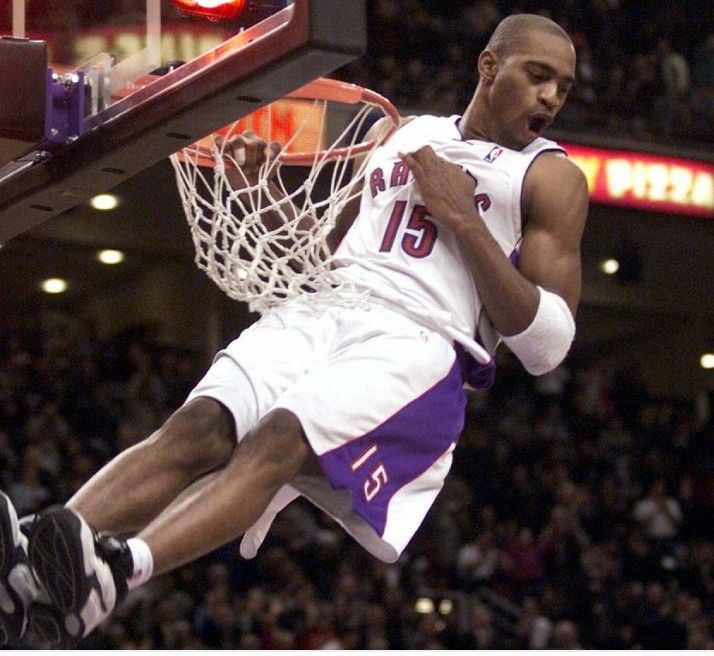
- Monitor the situation on the field, assessing the location of opponents on the court and your players.
- When dribbling, look at the court, not at the ball.
- When passing from the chest, be sure to rotate the wrist at the end.
- Use maximum passing speed without sacrificing accuracy.
- The passing of the ball must be both clear and precise, delivered neither too soft nor too hard. Make sure that the partner does not have difficulties in receiving.
- A fake pass occurs when you are absolutely sure that the opponent will not intercept it and start a retaliatory attack.
Tips for Catching the Ball in Basketball
When a student first learns to play basketball, one of the elements they encounter at the very beginning is catching the ball. Basketball is a complex and dangerous sport. It will hurt if someone cannot catch a sharply thrown ball. Therefore, before a player is hit in the face or another part of the body, make sure that he has and sufficiently developed skills to catch the ball. Here are some tips for catching the ball in basketball:
Here are some tips for catching the ball in basketball:
- Show the thrower where you want the ball to be by extending your arms above your waist with your fingers relaxed and apart.
- Your eyes must be focused on the flight of the ball.
- Do not start the next movement until you have the ball completely in your hands.
- Move towards the ball instead of waiting for it to hit.
- When catching, the first contact must be blocking - this is done with one hand slightly extended forward with fingers wide apart, and the second one is catching the ball.
- Move the ball to the center of the chest and keep it close to the body.
- Never try to catch the ball with one hand. Only the best basketball players can perform such an action qualitatively.
- Make sure your fingers are well relaxed before catching the game projectile. Bend your knees slightly to be able to move quickly in any direction after receiving the ball.
